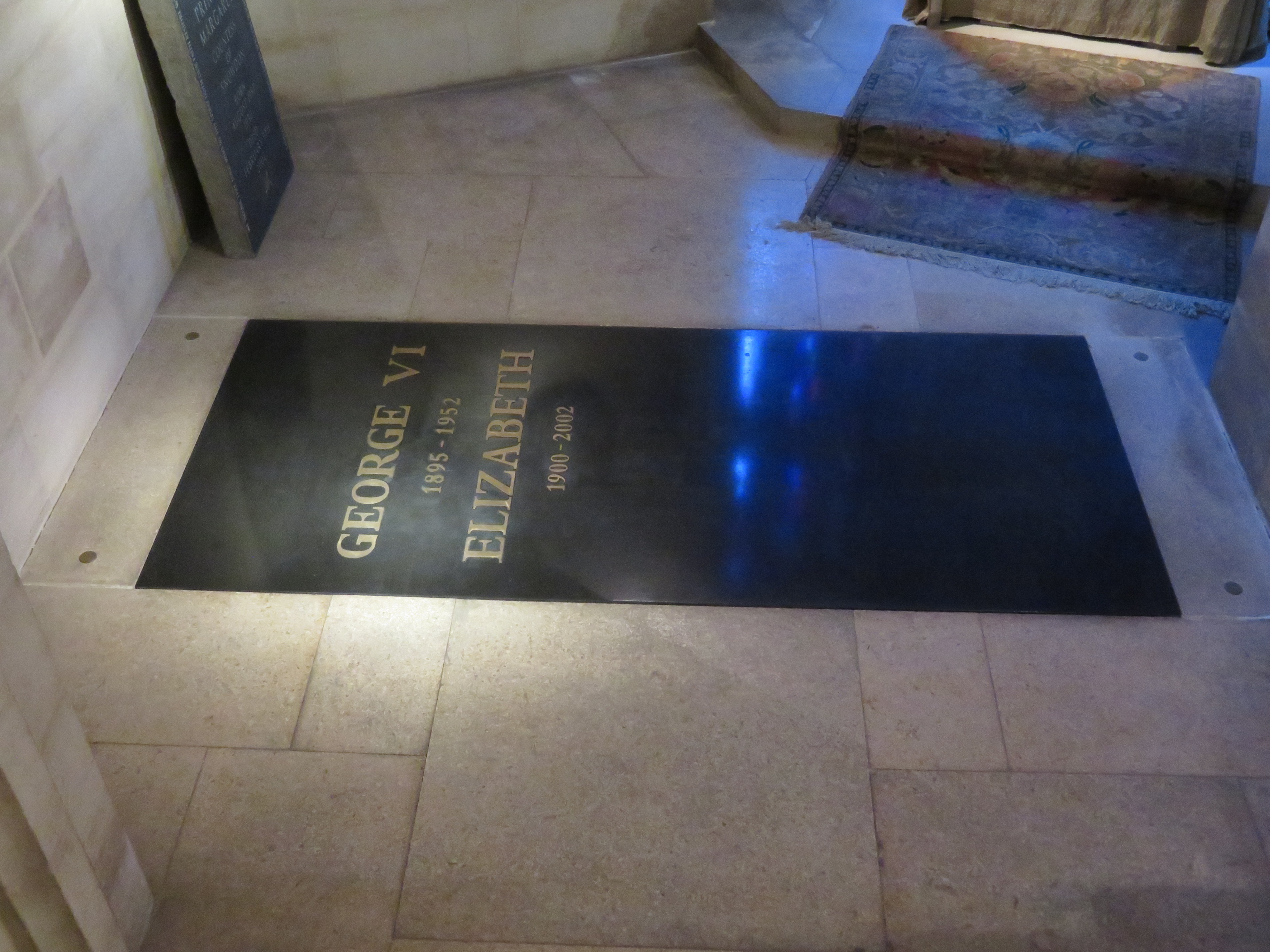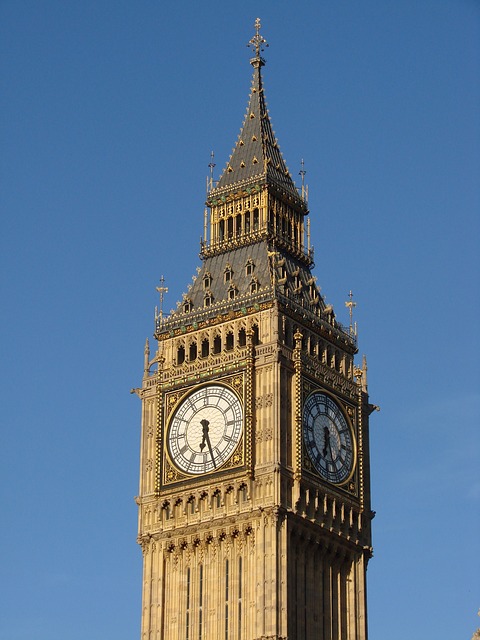Difference between revisions of "The Identity of The United Kingdom under the Ruling of King George VI and Queen Elizabeth II"
From Londonhua WIKI
(→Changes to the Role of the Monarchy as King of England) |
(→The Impact of the Changes to the Monarchy made by King George VI) |
||
| Line 69: | Line 69: | ||
...use as many subsections or main sections as you need to support the claims for why what you did related to your ''Background'' section... | ...use as many subsections or main sections as you need to support the claims for why what you did related to your ''Background'' section... | ||
<br><br> | <br><br> | ||
| − | == | + | ==Queen Elizabeth II, Queen of the United Kingdom and Head of the Commonwealth== |
<br> | <br> | ||
...and so on and so forth... | ...and so on and so forth... | ||
Revision as of 12:16, 15 June 2017
The Identity of The United Kingdom under the Ruling of King George VI and Queen Elizabeth
 Your Project Page Picture Caption |
Contents
- 1 The Identity of The United Kingdom under the Ruling of King George VI and Queen Elizabeth
- 2 Abstract
- 3 Introduction
- 4 Section 1: The Life and Reign of King George VI
- 5 Section 2: The Life and Reign of Queen Elizabeth II
- 6 Section 3: Timeline of Important Events
- 7 Gallery
- 8 Conclusion
- 9 External Links
- 10 References
Abstract
My experience for this milestone is to hopefully dive into pre and post World War II Great Britain and see how King George VI change the role of the monarchy and its transition from an Empire to a Commonwealth. I want to see the changes that he made and how those changes impacted Queen Elizabeth II and her early ruling as Queen of the Commonwealth. I previous took a British Empire class at WPI that dived into Great Britain between the American Revolution and Brexit. One memorable piece of the class was writing an essay on The King's Speech, which was about King George VI overcoming his stammer issue. It really got me thinking about how King George VI ruled during his time as king and what changes he made to the monarchy. Queen Elizabeth II was the first and so far only monarch to rule under the changes made by King Charles VI. I want to look at how those changes affected the ruling style between King George VI and Queen Elizabeth II.
Introduction
I suggest you save this section for last. Describe the essence of this project. Cover what the project is and who cares in the first two sentences. Then cover what others have done like it, how your project is different. Discuss the extent to which your strategy for completing this project was new to you, or an extension of previous HUA experiences.
As you continue to think about your project milestones, reread the "Goals" narrative on defining project milestones from the HU2900 syllabus. Remember: the idea is to have equip your milestone with a really solid background and then some sort of "thing that you do". You'll need to add in some narrative to describe why you did the "thing that you did", which you'd probably want to do anyway. You can make it easy for your advisors to give you a high grade by ensuring that your project milestone work reflects careful, considerate, and comprehensive thought and effort in terms of your background review, and insightful, cumulative, and methodical approaches toward the creative components of your project milestone deliverables.
PLEASE NOTE: this milestone template has only a few sections as examples, but your actual milestone should have many relevant sections and subsections. Please start to block out and complete those sections asking yourself "who, what, when, where, and why".
Remember, as you move toward your creative deliverable, you're going to want/need a solid background that supports your case, so you want it to paint a clear and thorough picture of what's going on, so that you can easily dissect your creative component and say "This thing I did is rooted in this aspect of my background research".
Section 1: The Life and Reign of King George VI
 | |
| Location | King George VI and his wife Elizabeth's grave at St. George's Chapel at Windsor Castle |
|---|---|
| Photo taken by | Dakota Payette |
King George VI did not expect to take to the throne so quickly. He was the second son of King George V, the reigning monarch of England during World War I. George VI fell into the same pattern as his father since both were the younger sibling and were not expected to take the throne. This project will dive into the life of King George VI and look at how he rose to power in England. Once he became King, he had to deal with Nazi Germany and their aggression in Europe and later on World War II. He would face the unprecedented challenge of changing the role of the monarchy as Britain changed from an Empire to a Commonwealth.
Life Before King of England
King George VI was born in 1895 as the second son of King George V, but he was known as Albert until he accessed to the throne. His older brother, who would later become King Edward VIII, was the heir apparent as they were growing up. Albert lived in the shadows of his older brother for their entire childhood. Most of the spotlight was on Edward since he was directly next in line for the throne, and their father was already getting old.
It was hard for Albert growing up however, since he was dealing with many different illnesses that hindered his public appearance. Even though he had these illnesses, he still battled against them and tried to display his courage. While he was serving as a naval cadet in Osborne, he came down with a server attack of pneumonia. [1] The illnesses almost made him stop serving as a cadet, but he was able to continue on once he beat the illness. During the early months of World War I, he had to take a leave of absence from duty to get treated for appendicitis. [2] Even still after the appendicitis incident, he wanted to continue on serving in the war. Many other members of the royal family were helping serve for the war efforts and he wanted to help. However, in 1917, injuries and surgery would strike again for him. He was treated for a duodenal ucler, but this would operation would be the last for him. [3]
Once the war was over, Albert realized the importance of staying fit and healthy and keeping in touch with the doctors and nurses who treated him. Keeping involved with medicine was a thing that his father knew the importance of since he was older when he accessed to the throne. King George V knew that he had to stay healthy as long as he was king. With Albert, he was close with the British Empire Cancer Campaign. During his stent in the House of Lords, he led that campaign right up until he took the throne. [4] That would occur in December of 1936, but not in the way many people thought it would happen.
Being the second of two sons, Albert never really imagined he would become king. His older brother would inherit the throne before him and become king. However, Edward insisted on marrying a previously divorced American women. Since the monarch is the head of both England and the Church of England, the monarch could not marry someone who was previously divorced. Edward picked his love over being king, which means he had to abdicate the throne, giving a clear path for Albert to become king. [5]
By the time Albert, now King George VI, took the throne, Edward's short legacy blasted a huge blow to the monarchy. Its public appearance had been damaged by Edward abdicating the throne and leaving it in the hands of a man with a sickly past. The monarchy was unstable as now three different kings had sat on the throne, and that hindered the appearance of the monarch in the eyes of the citizens in the Empire.[6]
Transformation of The United Kingdom and The Crown
King George VI had a rough start his reign due to the fact that his older brother abdicated. It was not a good start for him at all. The other bad part about him coming into power was the impeded issue of Germany which was gaining great power under Adolf Hitler. Germany was a scary threat to the rest of the world, and war would eventually break out in 1939.[7] Britain wouldn't be harmed during the first year of the war, but that changed in 1940 with the Luftwaffe. The Luftwaffe would terrorize London and the surrounding areas between the beginning of September of 1940 until the end of November [8]
The United Kingdom and the rest of the Allied Powers would prevail on May 8th, 1945, when Adolf Hitler committed suicide and Germany surrendered. [9] It was a celebratory day all over Europe. Victory in Europe marked a great change in England, however. After going through two world wars in a span of 30 years, the wars had taken a toll on all the empires in Europe. England's Empire was no stranger to this as they started to lose global power while the United States and Soviet Union rose. In response to this decline in power, England had to to change its position internally. [10]
England changed from an Empire to a Commonwealth for the better. In definition, the British change from an Empire to a Commonwealth of Nations was a long term effect of what happened during the American Revolution. [11] King George VI realized this after the World War II when India and South Africa started to rise in power. The British could no longer control other nations that were part of their Empire. If they did keep the Empire going, they ran the risk of repeating what happening in the American Revolution. He realized that instead of keeping the countries in their Empire separate from the outside world, it would hurt them in the long run as other countries started to develop. It would be better for them to have the ability to work alongside the United States with their new Commonwealth of Nations. [12]
The break up of the Empire and transition into a Commonwealth of Nations was the first time since the English Civil War in the 1650s where England was no longer an Empire. Oliver Cromwell tried to set up a provisional government with no monarch, but it wouldn't last after his death. Now that England was no longer an Empire, the monarch was no longer the King or Queen of the Empire. Instead, the head of state title was change to the Head of the Commonwealth. [13] Back in the British Empire, the Kind or Queen was the head of everything, but in the Commonwealth, they held little power. That power had been transferred to the Houses of Parliament and different new Cabinet positions while the King or Queen had become nothing more than a remembrance of the past.[14]
The Commonwealth, however, is not a political alliance of nations. Instead, it's a collection of nations formed out of the ashes of the old British Empire. Countries can leave the Commonwealth if they would like to. [15] It was more practical for Britain to transform into a Commonwealth because of the situation in India. India and Pakistan shared land borders with Communist Asia and were becoming more independent. It would be better for them in the long run to join the Commonwealth, so that is exactly what they did when the British Empire collapsed. [16]
Section 2: The Life and Reign of Queen Elizabeth II
 Your Project Page Picture Caption |
In this section, provide your contribution, creative element, assessment, or observation with regard to your background research. This could be a new derivative work based on previous research, or some parallel to other events. In this section, describe the relationship between your background review and your deliverable; make the connection between the two clear.
Life Before Queen of England
...use as many subsections or main sections as you need to support the claims for why what you did related to your Background section...
Queen Elizabeth II, Queen of the United Kingdom and Head of the Commonwealth
...and so on and so forth...
Section 3: Timeline of Important Events
In this section, provide your contribution, creative element, assessment, or observation with regard to your background research. This could be a new derivative work based on previous research, or some parallel to other events. In this section, describe the relationship between your background review and your deliverable; make the connection between the two clear.
Timeline of King George VI
...use as many subsections or main sections as you need to support the claims for why what you did related to your Background section...
Timeline of Queen Elizabeth II
...and so on and so forth...
Gallery
Conclusion
In this section, provide a summary or recap of your work, as well as potential areas of further inquiry (for yourself, future students, or other researchers).
External Links
If appropriate, add an external links section
References
- ↑ King George VI. (1952). The British Medical Journal, 1(4754), 366-367.
- ↑ King George VI. (1952). The British Medical Journal, 1(4754), 366-367.
- ↑ King George VI. (1952). The British Medical Journal, 1(4754), 366-367.
- ↑ King George VI. (1952). The British Medical Journal, 1(4754), 366-367.
- ↑ Cannadine, D. (1998). King George VI. In History in Our Time (pp. 59-67). New Haven; London: Yale University Press.
- ↑ Cannadine, D. (1998). King George VI. In History in Our Time (pp. 59-67). New Haven; London: Yale University Press.
- ↑ Okeeffe, S. (2017, March 19). The 1940s: The Queen Mother’s finest decade.
- ↑ Okeeffe, S. (2017, March 19). The 1940s: The Queen Mother’s finest decade.
- ↑ Okeeffe, S. (2017, March 19). The 1940s: The Queen Mother’s finest decade.
- ↑ Hall, H. (1953). The British Commonwealth of Nations. The American Political Science Review, 47(4), 997-1015.
- ↑ Hall, H. (1953). The British Commonwealth of Nations. The American Political Science Review, 47(4), 997-1015.
- ↑ Hall, H. (1953). The British Commonwealth of Nations. The American Political Science Review, 47(4), 997-1015.
- ↑ Hall, H. (1953). The British Commonwealth of Nations. The American Political Science Review, 47(4), 997-1015.
- ↑ Hall, H. (1953). The British Commonwealth of Nations. The American Political Science Review, 47(4), 997-1015.
- ↑ Hall, H. (1953). The British Commonwealth of Nations. The American Political Science Review, 47(4), 997-1015.
- ↑ Hall, H. (1953). The British Commonwealth of Nations. The American Political Science Review, 47(4), 997-1015.


